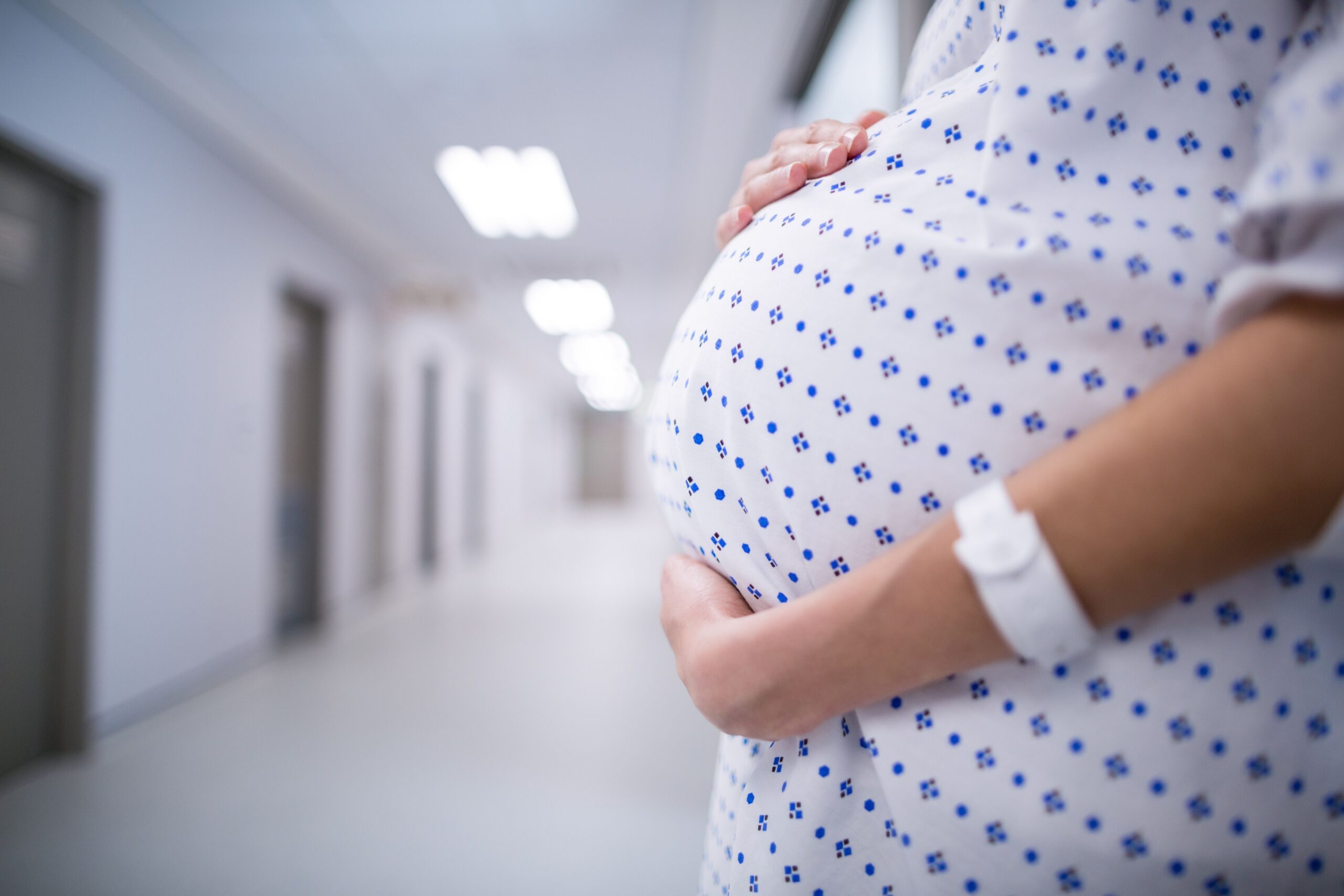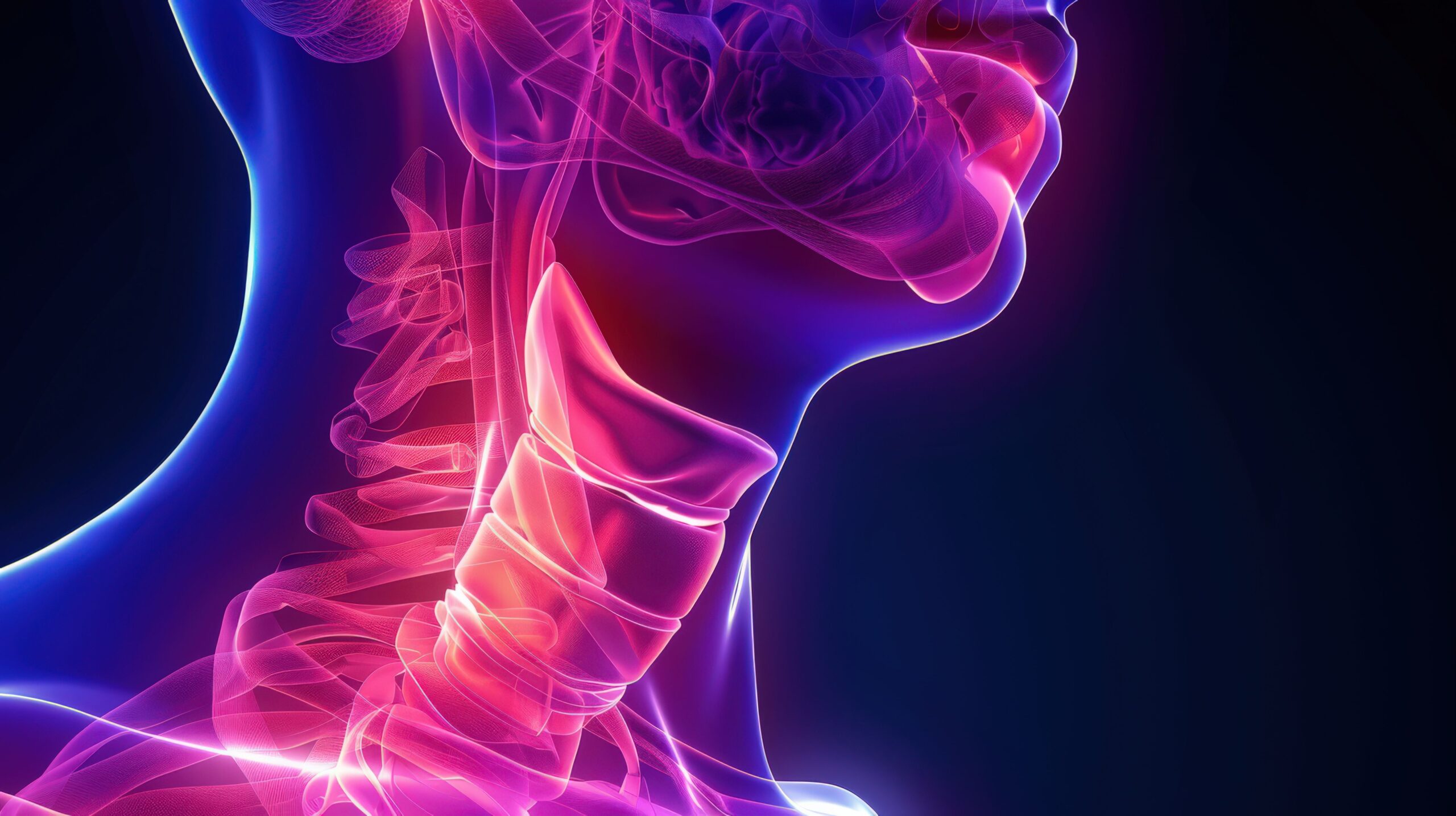Introduction
Etiology of acute vestibular syndrome (AVS) can be classified into peripheral vestibular and central lesions. The former primarily involves the peripheral vestibular structures (inner ear and vestibular nerve), such as vestibular neuritis and migraine, accounting for over 75% of AVS cases.1 The latter may affect central vestibular structures, including the vestibular nerve nuclei, the root of the eighth cranial nerve at the ponto-medullary junction, the cerebellar flocculus, and the nodulus. These structures participate in controlling the perception of head and body movements, generating vestibular-driven eye movements, processing visual signals, and maintaining balance and posture.2,3 Therefore, dysfunction of the central vestibular system can lead to dizziness, vertigo, oculomotor disturbances, and postural instability. Central AVS (eg, stroke) account for approximately 20% of all AVS cases.4 Central AVS is most commonly vascular in origin, primarily caused by ischemic stroke within the vertebrobasilar artery system,5 and it can often present solely as isolated vertigo, making it difficult to recognize during initial diagnosis.6 This article provides a detailed overview and summary of the recent diagnostic strategies and advances in clinical and laboratory testing for central AVS of a vascular cause, aiming to enhance clinicians’ understanding of such disease and improve their ability to make differential diagnoses.
Risk Factors of Central AVS
In neuro-otology outpatient clinics, approximately one-quarter of patients with vertigo have central AVS.7 Central AVS constitutes 20%-30% of posterior circulation ischemic strokes, with vertigo or dizziness as the dominant manifestation.8 While cases with neurological signs are easily recognized, isolated vertigo poses diagnostic challenges due to its mimicry of peripheral vestibular disorders (eg, vestibular neuritis).9–12 Notably, 19%-42% of posterior circulation ischemia cases present with isolated vertigo,13,14 and 20% lack focal neurological signs.14 In emergency departments, central vascular lesions account for approximately 3% of AVS patients.15 Comorbidities like atrial fibrillation or diabetes increase stroke risk sevenfold.16 Despite extensive emergency evaluations,17 emergency evaluations miss 35% of strokes,18,19 partly due to false-negative MRI-DWI results in 50% of minor stroke-related isolated vertigo cases.20
Patients diagnosed with peripheral vertigo had a significantly higher risk of ischemic stroke than propensity score-matched controls with renal colic (50-fold higher at 7 days; RR=9.3 at 30 days).21 And 0.4%-1.5% experiencing ischemic events within a year.22 Overreliance on dizziness classification systems and imaging,23 coupled with unstandardized bedside exams,23 perpetuates diagnostic errors. These findings underscore isolated vertigo as a critical “red flag” for central AVS, demanding vigilance even without classic signs or positive initial imaging.14,20,24
Diagnostic Strategies for Central AVS
Clinical History Characteristics Aid in Diagnosis
For the differential diagnosis of central AVS, it is essential to thoroughly collect the patient’s clinical history and conduct detailed neurological examinations along with bedside tests. Traditionally, excessive emphasis has been placed on categorizing dizziness into specific types—such as vertigo (vascular), presyncope (cardiovascular), episodic (neurological), and nonspecific (psychiatric, metabolic)—to guide diagnosis. This approach has led to numerous cases of central AVS being missed or misdiagnosed.25
Recently, a rapid bedside diagnostic approach, the Triage, Timing, Targeted Examination algorithm (TiTrATE) method, has been proposed.26 It classifies dizziness and vertigo based on the timing of onset (episodic or continuous), trigger factors (such as positional changes), and then conducts a Targeted Exam of eye movements to differentiate between peripheral and central AVS. In emergency patients presenting with intermittent or continuous dizziness, based on the timing and triggering factors from the clinical history, three syndromes may arise: 1) AVS: bedside examination helps differentiate vestibular neuritis from stroke. 2) Spontaneous episodic vestibular syndrome: Clinical history aids in distinguishing vestibular migraine from transient ischemic attack. 3) Triggered episodic vestibular syndrome: the Dix-Hallpike and roll test can be used to differentiate benign paroxysmal positional vertigo (BPPV) from central positional nystagmus caused by posterior fossa lesions.
All these three vestibular syndromes can be caused by vascular diseases, such as transient ischemic attack, ischemic, and hemorrhagic stroke27,28 (Table 1).
|
Table 1 Vascular Factors Leading to Four Types of Acute Vestibular Syndromes
|
Vestibular and Oculomotor Bedside Examinations
When a patient presents with AVS accompanied by other neurological symptoms and signs, stroke can be diagnosed in most cases, even without neuroimaging. However, central AVS with subtle neurological deficits may be undetectable by MRI, presenting a diagnostic challenge even for specialists.29 Recent advances in clinical neurology suggest that systematic bedside evaluation is more advantageous for identifying AVS caused by posterior circulation ischemia than neuroimaging.30 Key vestibular and oculomotor examinations include various nystagmus examinations, the head impulse test (HIT), HINTS bedside test, and other diagnostic approaches.
Various Nystagmus Examinations
Simple downbeat, upbeat, or torsional nystagmus is a significant feature of central vestibular lesions. Other forms of central nystagmus include periodic alternating nystagmus,31 see-saw or hemi-see-saw nystagmus,32,33 and acquired pendular nystagmus.34 Gaze-evoked nystagmus, which changes direction in the horizontal or vertical plane, often indicates impaired integration within the central nervous system network.35 Intense, paradoxical downbeat nystagmus following horizontal head shaking is commonly seen in central lesions, such as stroke, degenerative diseases, and drug intoxication.36 However, the direction of head-shaking nystagmus (HSN) depends on the location and extent of the central lesion, either ipsilateral or contralateral.37,38 Intense horizontal HSN is frequently observed in lateral medullary infarctions.39 A recent study suggests that enhanced anterior semicircular canal pathway responses may contribute to paradoxical downbeat HSN, representing one of the mechanisms of central lesions.40
In both central and peripheral vestibular diseases, positional changes can induce or modulate spontaneous nystagmus. Since central positional nystagmus can resemble the positional nystagmus of BPPV,41 central lesions should be suspected in patients with persistent positional nystagmus despite repeated canalith repositioning maneuvers.42 Particularly in cases of nodular and uvular damage, secondary vestibular neurons’ responses to irregular afferent signals may be enhanced, leading to increased post-rotational signals and resulting in paroxysmal positional nystagmus.43
Head Impulse Test (HIT)
The bedside HIT is an effective tool for distinguishing central AVS from benign inner ear diseases.44,45 It tests the vestibulo-ocular reflex (VOR) by turning the head rapidly to one side. A positive HIT, characterized by reduced VOR gain with corrective saccades, indicates peripheral vestibular hypofunction.46 Lee et al47 found that patients with isolated cerebellar infarctions consistently had normal bedside HIT results. However, when lesions involve specific central vestibular structures such as the vestibular nuclei,48,49 flocculus,50,51 or nucleus prepositus hypoglossi (NPH),52 a positive HIT may be observed. Involvement of the unilateral flocculus or NPH often results in more prominent VOR gain reduction on the healthy side than on the affected side52,53 (Table 2). A recent report indicated that approximately 20% of patients with posterior inferior cerebellar artery or superior cerebellar artery infarctions exhibited decreased VOR gain on the side contralateral to the lesion, with bilateral mean HIT gain of around 0.75, and 80% of these patients had abnormalities.54 Therefore, although a negative HIT strongly suggests central AVS, a positive HIT is not an absolute marker of peripheral vestibular lesions. Moreover, other abnormal HIT patterns indicating central lesions include hyperactivity (increased gain with reverse corrective saccades) and paradoxical responses (upward eye movements during head turns with downward corrective saccades), previously reported in patients with diffuse cerebellar dysfunction.40,55
 |
Table 2 HIT Manifestations in Central Vestibular Structure Lesions
|
HINTS Bedside Test
The HINTS examination includes HIT, nystagmus assessment, and the test of skew.44 Several studies have demonstrated that HINTS results are highly specific for distinguishing central from peripheral vertigo and are even more sensitive than early MRI-DWI, particularly in diagnosing lacunar infarction.56 A study by Choi et al in Korea reported the use of HINTS in 34 patients with AVS caused by lacunar infarction, identifying central eye movement abnormalities in 33 cases, even though initial MRI-DWI scans in six patients did not detect lesions.57 That same year, Kim et al conducted HINTS examinations on 91 AVS patients, with 7 of 8 stroke patients displaying central HINTS findings.58
It’s noteworthy that HINTS is limited in its ability to detect anterior inferior cerebellar artery (AICA) infarction, with a false-negative rate of 17–29%.59 This is because AICA supplies the inner ear and structures like the flocculus, and infarction in this region can result in both central and peripheral vestibular deficits.60 A previously reported case of isolated unilateral flocculus infarction showed an increase in low-frequency horizontal VOR gain and decreased VOR gain during high-frequency stimuli. Despite HINTS often being normal in patients with central vestibular lesions, a positive HIT does not rule out cerebellar involvement affecting the flocculus.61 Therefore, in elderly patients with sudden onset of unilateral hearing loss and vertigo, particularly in the presence of vascular risk factors, isolated labyrinth infarction should be considered. Incorporating horizontal head-shaking and finger-rubbing hearing tests (HINTS plus) is helpful in detecting central lesions, proving more convenient and effective than repeat MRI scans.57
Other Diagnostic Approaches
In addition to HINTS, other methods for diagnosing central AVS have been proposed. A retrospective study found that assessing gait and balance is crucial for ruling out AVS.62 Although normal gait does not exclude cerebellar infarction, abnormal gait is a significant clue for diagnosing cerebellar stroke.63 The ABCD2 score—accounting for age, blood pressure, clinical features, duration, and diabetes—is used to predict stroke risk in AVS patients. It was shown that 8.1% of AVS patients with a score ≥4 developed a stroke, increasing to 27% with a score of6−7.64 However, HINTS is superior to the ABCD2 score in evaluating stroke risk in AVS patients.65 Additionally, the recently reported the Triage plus Gait (TriAGe+) score, which includes eight variables [no triggers (2), atrial fibrillation (2), male (1), blood pressure >140/90 (2), brainstem or cerebellar dysfunction (1), focal weakness or speech disturbance (4), dizziness (3), no history of dizziness/vertigo or labyrinth/vestibular disease (2)], has proven to be more sensitive than the ABC Vestibular and oculomotor bedside examinations D2 score. With a score of 10, the sensitivity reaches 83.4%.66 A Posterior Circulation Ischemia (PCI) Risk Score specifically designed to assess the risk of posterior circulation stroke was developed in 2018 with higher sensitivity and specificity, and is particularly well used in patients with dizziness as a primary symptom. The PCI scale diagnosed posterior circulation stroke with a much higher sensitivity and area under the receiver operating characteristic curve value (0.82) than the ABCD2 score (0.69).67 Another scale that screens AVS symptoms such as imbalance, floating sensation, nonspecific dizziness, unsteadiness, and vertigo showed a sensitivity of 100%, significantly reducing the risk of misdiagnosis in AVS.68 A new scale was recently developed. The Sudbury Vertigo Risk Score [Male (1), Age>65 (1), Diabetes (1), Hypertension (3), Motor/sensory (5), Cerebellar (6), BPPV diagnosis (−5)] effectively identifies the risk of a serious diagnosis in patients with dizziness. The risk of a serious diagnosis ranged from 0% for a score of <5 to 16.7% for a score >8. Sensitivity for a serious diagnosis was 100% and specificity was 69.2% for a score <5.69
Certain laboratory tests have been reported to be significant indicators for diagnosing AVS patients. The neutrophil-to-lymphocyte ratio (NLR) has become a widely used marker. An NLR >2.8 combined with the absence of horizontal nystagmus is a specific indicator for diagnosing stroke in AVS patients.70 Elevated neuron-specific enolase levels in AVS patients are also independently associated with stroke.71
For years, the relationship between stroke risk factors and AVS has been a research focus. Univariate analysis has shown that age, diabetes, coronary artery disease, atrial fibrillation, and a history of dizziness are statistically significant.72 Bi et al also proposed that AVS patients with three or more risk factors (male, age >60, hypertension, diabetes, smoking, and a history of stroke) have a significantly higher risk of posterior circulation infarction.17 In addition to these factors, Kim et al demonstrated that in multivariate models, imbalance and extracranial atherosclerosis are independent risk factors for posterior circulation infarction73 (Table 3).
 |
Table 3 Diagnostic Methods for Central AVS
|
Imaging Diagnosis
The sensitivity of computed tomography (CT) in detecting posterior circulation infarction is relatively low, only 16%.76,77 Diffusion-weighted imaging (DWI) in MRI can detect 80% of infarct lesions. However, it is important to note that within 24–48 hours of onset, 15–20% of posterior circulation infarctions may be missed on MRI scans.78 Perfusion-weighted imaging (PWI) helps identify posterior circulation ischemia, especially in patients with initial DWI-negative results. In a prospective cohort study, 12 out of 26 posterior circulation infarction patients presenting with AVS who were DWI-negative had decreased PWI perfusion. The sensitivity of combining HINTS plus balance testing reached 83%, and further integration with PWI improved the sensitivity to 100%. This shows that the combination of neurological and neuro-otological assessments (neurological examination + HINTS plus + balance test) with PWI can accurately identify posterior circulation infarction in patients presenting with AVS.79
When a vascular cause is suspected, neurosonography offers a non-invasive method to assist in diagnosis. In a study using duplex ultrasound of the vertebral artery, 25% (27/108) of AVS patients were diagnosed with posterior circulation infarction through ultrasound, showing that while the sensitivity of neurosonography is not high (40.7%), its specificity (100%), positive predictive value (100%), and negative predictive value (83.5%) are favorable75 (Table 3).
Conclusions
Central AVS remains a diagnostic challenge, particularly when presenting as isolated vertigo without overt neurological deficits. This review highlights the critical importance of integrating clinical history, targeted bedside examinations (eg, HINTS, nystagmus assessments), and multimodal imaging to differentiate central AVS from peripheral vestibular disorders. Key findings include: 1) Bedside evaluation superiority: systematic oculomotor testing (eg, HINTS) demonstrates higher sensitivity than early MRI-DWI for detecting posterior circulation strokes, especially in lacunar infarctions. 2) Pitfalls in imaging: up to 20% of posterior circulation infarctions may be missed on initial MRI-DWI, necessitating adjunctive techniques like PWI or neurosonography when clinical suspicion persists.3) Complex vestibular pathways: lesions in specific central structures (eg, vestibular nuclei, flocculus) can mimic peripheral vestibular dysfunction, underscoring the need for nuanced interpretation of tests like the HIT. 4) Risk stratification tools: Scores such as TriAGe+ and PCI scale improve early identification of stroke risk in AVS patients, complementing traditional ABCD2 assessments. Although posterior circulation strokes account for the majority of central AVS cases, anterior circulation involvement (particularly insular, frontal, or parietal lesions) may rarely present with isolated vertigo, posing diagnostic challenges. AVS is not only seen in the posterior circulation but can also be seen in the anterior circulation.
It is critical to prioritize bedside examinations despite negative imaging, maintain high suspicion for central AVS in patient population at high-risk of stroke, and adopt a stepwise diagnostic algorithm to optimize outcomes. Moving forward, a multidisciplinary approach—combining advanced neuroimaging, laboratory biomarkers (eg, NLR), and dynamic follow-up—is essential to reduce misdiagnosis rates. Future research should focus on validating rapid diagnostic protocols and exploring the role of emerging technologies (eg, AI-assisted oculomotor analysis) in AVS management.
Acknowledgments
We gratefully appreciate all the participants and staff for their contributions.
Author Contributions
All authors made a significant contribution to the work reported, whether that is in the conception, study design, execution, acquisition of data, analysis and interpretation, or in all these areas; took part in drafting, revising or critically reviewing the article; gave final approval of the version to be published; have agreed on the journal to which the article has been submitted; and agree to be accountable for all aspects of the work.
Funding
This study was funded in part by the Project of Aerospace center hospital under Grant YN202411(Corresponding author: Zhirong Wan).
Disclosure
The authors report no conflicts of interest in this work.
References
1. Steenerson KK. Acute Vestibular Syndrome. Continuum. 2021;27(2):402–419. doi:10.1212/CON.0000000000000958
2. Dougherty JM, Carney M, Hohman MH, et al. Vestibular dysfunction. 2024.
3. Edlow JA, Newman-Toker D. Using the physical examination to diagnose patients with acute dizziness and vertigo. J Emerg Med. 2016;50(4):617–628. doi:10.1016/j.jemermed.2015.10.040
4. Gottlieb M, Peksa GD, Carlson JN. Head impulse, nystagmus, and test of skew examination for diagnosing central causes of acute vestibular syndrome.Cochrane Database. Syst Rev. 2023;11(11):CD15089.
5. Kim HA, Lee H. Recent advances in central acute vestibular syndrome of a vascular cause. J Neurol Sci. 2012;321(1–2):17–22. doi:10.1016/j.jns.2012.07.055
6. Lee SH, Kim JS. Acute diagnosis and management of stroke presenting dizziness or vertigo. Neurol Clin. 2015;33(3):687–698. doi:10.1016/j.ncl.2015.04.006
7. Edlow JA, Carpenter C, Akhter M, et al. Guidelines for reasonable and appropriate care in the emergency department 3 (GRACE-3): acute dizziness and vertigo in the emergency department. Acad Emerg Med. 2023;30(5):442–486. doi:10.1111/acem.14728
8. Choi JY, Lee SH, Kim JS. Central vertigo. Curr Opin Neurol. 2018;31(1):81–89. doi:10.1097/WCO.0000000000000511
9. Umibe A, Kitahara T, Aoki S, et al. Clinical diagnosis of central vertigo in patients with dizziness in emergency practice. Neurologist. 2021;26(3):75–79. doi:10.1097/NRL.0000000000000323
10. Saber TA, Kattah JC, Kerber KA, et al. Diagnosing stroke in acute dizziness and vertigo: pitfalls and pearls. Stroke. 2018;49(3):788–795. doi:10.1161/STROKEAHA.117.016979
11. Shemesh AA, Gold DR. Dizziness and vertigo: the skillful examination. J Neuroophthalmol. 2020;40(3):e49–e61. doi:10.1097/WNO.0000000000000980
12. Kuruvilla A, Bhattacharya P, Rajamani K, et al. Factors associated with misdiagnosis of acute stroke in young adults. J Stroke Cerebrovasc Dis. 2011;20(6):523–527. doi:10.1016/j.jstrokecerebrovasdis.2010.03.005
13. Choi KD, Lee H, Kim JS. Vertigo in brainstem and cerebellar strokes. Curr Opin Neurol. 2013;26(1):90–95. doi:10.1097/WCO.0b013e32835c5edd
14. Hoshino T, Nagao T, Mizuno S, et al. Transient neurological attack before vertebrobasilar stroke. J Neurol Sci. 2013;325(1–2):39–42. doi:10.1016/j.jns.2012.11.012
15. Newman-Toker DE. Missed stroke in acute vertigo and dizziness: it is time for action, not debate. Ann Neurol. 2016;79(1):27–31. doi:10.1002/ana.24532
16. Saro-Buendia M, Torres-Garcia L, Angel NJ, et al. Dizziness evaluation and characterisation of patients with posterior circulation stroke in the emergency department; a case series study. Arch Acad Emerg Med. 2023;11(1):e12. doi:10.22037/aaem.v11i1.1764
17. Bi Y, Cao F. A dynamic nomogram to predict the risk of stroke in emergency department patients with acute dizziness. Front Neurol. 2022;13:839042. doi:10.3389/fneur.2022.839042
18. Nham B, Reid N, Bein K, et al. Capturing vertigo in the emergency room: three tools to double the rate of diagnosis. J Neurol. 2022;269(1):294–306. doi:10.1007/s00415-021-10627-1
19. Tarnutzer AA, Lee SH, Robinson KA, et al. ED misdiagnosis of cerebrovascular events in the era of modern neuroimaging: a meta-analysis. Neurology. 2017;88(15):1468–1477. doi:10.1212/WNL.0000000000003814
20. Happonen T, Nyman M, Ylikotila P, et al. Imaging outcomes of emergency MR imaging in dizziness and vertigo: a retrospective cohort study. AJNR Am J Neuroradiol. 2024;45(6):819–825. doi:10.3174/ajnr.A8202
21. Atzema CL, Grewal K, Lu H, et al. Outcomes among patients discharged from the emergency department with a diagnosis of peripheral vertigo. Ann Neurol. 2016;79(1):32–41. doi:10.1002/ana.24521
22. Shah VP, Oliveira JESL, Farah W, et al. Diagnostic accuracy of neuroimaging in emergency department patients with acute vertigo or dizziness: a systematic review and meta-analysis for the guidelines for reasonable and appropriate care in the emergency department. Acad Emerg Med. 2023;30(5):517–530. doi:10.1111/acem.14561
23. Arch AE, Weisman DC, Coca S, et al. Missed ischemic stroke diagnosis in the emergency department by emergency medicine and neurology services. Stroke. 2016;47(3):668–673. doi:10.1161/STROKEAHA.115.010613
24. Kim HJ, Lee SH, Park JH, et al. Isolated vestibular nuclear infarction: report of two cases and review of the literature. J Neurol. 2014;261(1):121–129. doi:10.1007/s00415-013-7139-0
25. Choi JH, Park MG, Choi SY, et al. Acute transient vestibular syndrome: prevalence of stroke and efficacy of bedside evaluation. Stroke. 2017;48(3):556–562. doi:10.1161/STROKEAHA.116.015507
26. Newman-Toker DE, Edlow JA. TiTrATE: a novel, evidence-based approach to diagnosing acute dizziness and vertigo. Neurol Clin. 2015;33(3):577–599. doi:10.1016/j.ncl.2015.04.011
27. Edlow JA. Diagnosing patients with acute-onset persistent dizziness. Ann Emerg Med. 2018;71(5):625–631. doi:10.1016/j.annemergmed.2017.10.012
28. Edlow JA, Gurley KL, Newman-Toker DE. A new diagnostic approach to the adult patient with acute dizziness. J Emerg Med. 2018;54(4):469–483. doi:10.1016/j.jemermed.2017.12.024
29. Saber TA, Kattah JC, Mantokoudis G, et al. Small strokes causing severe vertigo: frequency of false-negative MRIs and nonlacunar mechanisms. Neurology. 2014;83(2):169–173. doi:10.1212/WNL.0000000000000573
30. Huh YE, Kim JS. Bedside evaluation of dizzy patients. J Clin Neurol. 2013;9(4):203–213. doi:10.3988/jcn.2013.9.4.203
31. Lee SH, Lee SY, Choi SM, et al. Resolution of periodic alternating nystagmus with amantadine. J Neurol Sci. 2016;364:65–67. doi:10.1016/j.jns.2016.03.014
32. Eggenberger ER. Mystery Case: pendular see-saw nystagmus as a delayed complication of traumatic brain injury. Neurology. 2015;84(5):547. doi:10.1212/01.wnl.0000461046.30280.e4
33. Jeong SH, Kim EK, Lee J, et al. Patterns of dissociate torsional-vertical nystagmus in internuclear ophthalmoplegia. Ann N Y Acad Sci. 2011;1233(1):271–278. doi:10.1111/j.1749-6632.2011.06155.x
34. Tilikete C, Jasse L, Pelisson D, et al. Acquired pendular nystagmus in multiple sclerosis and oculopalatal tremor. Neurology. 2011;76(19):1650–1657. doi:10.1212/WNL.0b013e318219fa9c
35. Aerts C, Thouvenot E, Wacongne A, et al. Gaze-evoked nystagmus due to ischemic infarction involving the nucleus prepositus hypoglossi, a case report. Rev Neurol. 2016;172(2):160–161. doi:10.1016/j.neurol.2015.09.009
36. Sekar A, Panouilleres M, Kaski D. Detecting abnormal eye movements in patients with neurodegenerative diseases current insights. Eye Brain. 2024;16:3–16. doi:10.2147/EB.S384769
37. Huh YE, Kim JS. Patterns of spontaneous and head-shaking nystagmus in cerebellar infarction: imaging correlations. Brain. 2011;134(Pt 12):3662–3671. doi:10.1093/brain/awr269
38. Huh YE, Koo JW, Lee H, et al. Head-shaking aids in the diagnosis of acute audio-vestibular loss due to anterior inferior cerebellar artery infarction. Audiol Neurootol. 2013;18(2):114–124. doi:10.1159/000345643
39. Choi KD, Oh SY, Park SH, et al. Head-shaking nystagmus in lateral medullary infarction: patterns and possible mechanisms. Neurology. 2007;68(17):1337–1344. doi:10.1212/01.wnl.0000260224.60943.c2
40. Kim SH, Lee SU, Cho BH, et al. Analyses of head-impulse tests in patients with posterior circulation stroke and vestibular neuritis. Neurology. 2023;100(23):e2374–e2385. doi:10.1212/WNL.0000000000207299
41. Kim HJ, Park J, Kim JS. Update on benign paroxysmal positional vertigo. J Neurol. 2021;268(5):1995–2000. doi:10.1007/s00415-020-10314-7
42. Yang TH, Oh SY. Geotropic central paroxysmal positional nystagmus in a patient with human immuno-deficiency virus encephalopathy. J Neuroophthalmol. 2014;34(2):159–161. doi:10.1097/WNO.0000000000000094
43. Choi JY, Kim JS. Central positional nystagmus: characteristics and model-based explanations. Prog Brain Res. 2019;249:211–225.
44. Kattah JC, Talkad AV, Wang DZ, et al. HINTS to diagnose stroke in the acute vestibular syndrome: three-step bedside oculomotor examination more sensitive than early MRI diffusion-weighted imaging. Stroke. 2009;40(11):3504–3510. doi:10.1161/STROKEAHA.109.551234
45. Newman-Toker DE, Kattah JC, Alvernia JE, et al. Normal head impulse test differentiates acute cerebellar strokes from vestibular neuritis. Neurology. 2008;70(24 Pt 2):2378–2385. doi:10.1212/01.wnl.0000314685.01433.0d
46. Halmagyi GM, Curthoys IS. A clinical sign of canal paresis. Arch Neurol. 1988;45(7):737–739. doi:10.1001/archneur.1988.00520310043015
47. Lee H, Sohn SI, Cho YW, et al. Cerebellar infarction presenting isolated vertigo: frequency and vascular topographical patterns. Neurology. 2006;67(7):1178–1183. doi:10.1212/01.wnl.0000238500.02302.b4
48. Atac C, Kisabay A, Cetin AC, et al. Vestibular nuclear infarction: case series and review of the literature. J Stroke Cerebrovasc Dis. 2020;29(8):104937. doi:10.1016/j.jstrokecerebrovasdis.2020.104937
49. Oh SY, Lee J, Kang JJ, et al. Altered resting-state functional connectivity in wernicke’s encephalopathy with vestibular impairment. Front Neurol. 2019;10:1035. doi:10.3389/fneur.2019.01035
50. Kwon E, Jeong HS, Jeong SH, et al. Central paroxysmal positional nystagmus mimicking posterior canal benign paroxysmal positional vertigo in pontine infarction: a case report and literature review. J Neurol. 2024;271(6):3672–3677. doi:10.1007/s00415-024-12346-9
51. Nam GS, Shin HJ, Kang JJ, et al. Clinical implication of corrective saccades in the video head impulse test for the diagnosis of posterior inferior cerebellar artery infarction. Front Neurol. 2021;12:605040. doi:10.3389/fneur.2021.605040
52. Kim SH, Zee DS, du Lac S, et al. Nucleus prepositus hypoglossi lesions produce a unique ocular motor syndrome. Neurology. 2016;87(19):2026–2033. doi:10.1212/WNL.0000000000003316
53. Baek SH, Choi JY, Jung JM, et al. Abnormal head impulse test in a unilateral cerebellar lesion. J Clin Neurol. 2015;11(3):279–282. doi:10.3988/jcn.2015.11.3.279
54. Baek W, Jae LY, Oh J, et al. Assessing the vestibulo-ocular reflex of contralesional sides according to head impulse velocity utilizing the video head impulse test in patients with vestibular neuritis. J Int Adv Otol. 2024;20(3):236–240. doi:10.5152/iao.2024.231340
55. Ramos BF, Cal R, Carmona S, et al. Corrective saccades in unilateral and bilateral vestibular hypofunction during slow rotation expressed by visually enhanced VOR and VOR suppression: role of the cerebellum. Cerebellum. 2021;20(5):673–677. doi:10.1007/s12311-019-01066-w
56. Kim HA, Oh EH, Choi SY, et al. Transient vestibular symptoms preceding posterior circulation stroke: a prospective multicenter study. Stroke. 2021;52(6):e224–e228. doi:10.1161/STROKEAHA.120.032488
57. Choi JH, Kim HW, Choi KD, et al. Isolated vestibular syndrome in posterior circulation stroke: frequency and involved structures. Neurol Clin Pract. 2014;4(5):410–418. doi:10.1212/CPJ.0000000000000028
58. Kim JS, Newman-Toker DE, Kerber KA, et al. Vascular vertigo and dizziness: diagnostic criteria. J Vestib Res. 2022;32(3):205–222. doi:10.3233/VES-210169
59. Choi SY, Kim HJ, Kim JS. Chasing dizzy chimera: diagnosis of combined peripheral and central vestibulopathy. J Neurol Sci. 2016;371:69–78. doi:10.1016/j.jns.2016.09.063
60. Chen L, Halmagyi GM. Central lesions with selective semicircular canal involvement mimicking bilateral vestibulopathy. Front Neurol. 2018;9:264. doi:10.3389/fneur.2018.00264
61. Kim SH, Kim H, Lee SU, et al. Bilaterally positive head-impulse tests can differentiate AICA infarction from labyrinthitis. Front Neurol. 2024;15:1448989. doi:10.3389/fneur.2024.1448989
62. Vanni S, Pecci R, Edlow JA, et al. Differential diagnosis of vertigo in the emergency department: a prospective validation study of the STANDING algorithm. Front Neurol. 2017;8:590. doi:10.3389/fneur.2017.00590
63. Greer A, Hewitt M. BET 2: ability of a normal gait examination to rule out cerebellar stroke in acute vertigo. Emerg Med J. 2018;35(11):712–714. doi:10.1136/emermed-2018-208170.2
64. Navi BB, Kamel H, Shah MP, et al. Application of the ABCD2 score to identify cerebrovascular causes of dizziness in the emergency department. Stroke. 2012;43(6):1484–1489. doi:10.1161/STROKEAHA.111.646414
65. Gerlier C, Hoarau M, Fels A, et al. Differentiating central from peripheral causes of acute vertigo in an emergency setting with the HINTS, STANDING, and ABCD2 tests: a diagnostic cohort study. Acad Emerg Med. 2021;28(12):1368–1378. doi:10.1111/acem.14337
66. Kuroda R, Nakada T, Ojima T, et al. The TriAGe+ score for vertigo or dizziness: a diagnostic model for stroke in the emergency department. J Stroke Cerebrovasc Dis. 2017;26(5):1144–1153. doi:10.1016/j.jstrokecerebrovasdis.2017.01.009
67. Chen R, Su R, Deng M, et al. A posterior circulation ischemia risk score system to assist the diagnosis of dizziness. J Stroke Cerebrovasc Dis. 2018;27(2):506–512. doi:10.1016/j.jstrokecerebrovasdis.2017.09.027
68. Yamada S, Yasui K, Kawakami Y, et al. DEFENSIVE stroke scale: novel diagnostic tool for predicting posterior circulation infarction in the emergency department. J Stroke Cerebrovasc Dis. 2019;28(6):1561–1570. doi:10.1016/j.jstrokecerebrovasdis.2019.03.005
69. van Patot ET, Roy D, Baraku E, et al. Validation of the sudbury vertigo risk score to risk stratify for a serious cause of vertigo. Acad Emerg Med. 2025;32(8):863–873. doi:10.1111/acem.70017
70. Lee SH, Yun SJ, Ryu S, et al. Utility of neutrophil-to-lymphocyte ratio (NLR) as a predictor of acute infarction in new-onset acute vertigo patients without neurologic and computed tomography abnormalities. J Emerg Med. 2018;54(5):607–614. doi:10.1016/j.jemermed.2017.12.058
71. Zuo L, Zhan Y, Liu F, et al. Clinical and laboratory factors related to acute isolated vertigo or dizziness and cerebral infarction. Brain Behav. 2018;8(9):e1092. doi:10.1002/brb3.1092
72. Mohwald K, Bardins S, Muller HH, et al. Protocol for a prospective interventional trial to develop a diagnostic index test for stroke as a cause of vertigo, dizziness and imbalance in the emergency room (EMVERT study). BMJ Open. 2017;7(10):e19073. doi:10.1136/bmjopen-2017-019073
73. Kim Y, Faysel M, Balucani C, et al. Ischemic stroke predictors in patients presenting with dizziness, imbalance, and vertigo. J Stroke Cerebrovasc Dis. 2018;27(12):3419–3424. doi:10.1016/j.jstrokecerebrovasdis.2018.08.002
74. Newman-Toker DE, Kerber KA, Hsieh YH, et al. HINTS outperforms ABCD2 to screen for stroke in acute continuous vertigo and dizziness. Acad Emerg Med. 2013;20(10):986–996. doi:10.1111/acem.12223
75. Tabuas-Pereira M, Sargento-Freitas J, Isidoro L, et al. Neurosonology accuracy for isolated acute vestibular syndromes. J Ultrasound Med. 2017;36(12):2545–2550. doi:10.1002/jum.14301
76. Chalela JA, Kidwell CS, Nentwich LM, et al. Magnetic resonance imaging and computed tomography in emergency assessment of patients with suspected acute stroke: a prospective comparison. Lancet. 2007;369(9558):293–298. doi:10.1016/S0140-6736(07)60151-2
77. Tu LH, Melnick E, Venkatesh AK, et al. Cost-effectiveness of CT, CTA, MRI, and specialized MRI for evaluation of patients presenting to the emergency department with dizziness. AJR Am J Roentgenol. 2024;222(2):e2330060. doi:10.2214/AJR.23.30060
78. Akoglu EU, Akoglu H, Cimilli OT, et al. Predictors of false negative diffusion-weighted MRI in clinically suspected central cause of vertigo. Am J Emerg Med. 2018;36(4):615–619. doi:10.1016/j.ajem.2017.09.038
79. Choi JH, Oh EH, Park MG, et al. Early MRI-negative posterior circulation stroke presenting as acute dizziness. J Neurol. 2018;265(12):2993–3000. doi:10.1007/s00415-018-9097-z













